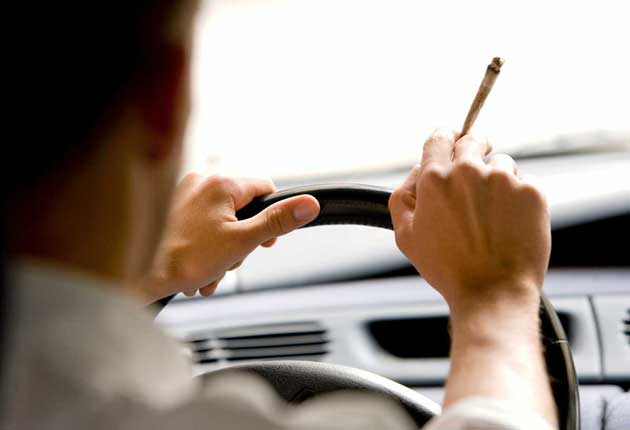Drug driving: can 'drugalysers' stamp it out?
Drugs, even the medicinal kind, are a growing hazard for drivers. The facts are sobering, finds Jimmy Lee Shreeve

The Euston underpass had never looked so beautiful. The mix of rain and oil spillage – and the influence of copious amounts of marijuana and hashish – had turned the tarmac into a hypnotic rainbow.
Unfortunately, for film actor Robert Goodman, 53, who was making his way home one Christmas on his beloved 750 Royal Enfield motorcycle, it led to him being distracted and crashing into the kerb. "I tore muscles and ligaments in my left knee," says Goodman, whose movie credits include Gangs of New York. "The pain was excruciating. But I'm just thankful it was me that was hurt and no one else."
Goodman had been at a friend's house when he took the drugs, but he'd drunk numerous cups of strong coffee and left it a good few hours before driving his bike home. "I thought I was doing good – until I came off," says Goodman, who knows that he made a grave error of judgement. "Even now, five years later, my knee still gives me gip."
These days Goodman no longer takes drugs (nor does he drink) – whether he's driving or not. But a lot of people do, particularly over the Christmas period. The figures are sobering. According to Department for Transport research, almost 20 per cent of drivers involved in fatal accidents have traces of drugs in their system. And an RAC Foundation survey of 474 Max Power magazine readers, conducted in 2005, found that young people are more likely to be driven by someone who has been taking drugs than by someone who has been drinking.
The extent of the problem began to surface in 2002 when the head of traffic at Durham Police, Superintendent Barry Peart, asked labs to screen for drugs as they suspected drugs were one of the common denominators in incidents. The findings, he said, were "alarming, far worse than we thought".
As a result of mounting evidence that more motorists are drug driving, new roadside drug testing kits are to be introduced next year. Dubbed "drugalysers", they analyse a motorist's saliva for drugs. Currently, police use the roadside Field Impairment Test (FIT) to work out if someone is driving while on drugs and/or drink. The test originated in the US and involves making suspects stand on one leg, walk in a straight line, and touch the tip of their nose with a finger, as well as number-based questions to check mental agility.
If tests prove positive, drivers face the same punishment as those over the alcohol limit: a minimum one-year ban and a fine of up to £5,000. But this can never make up for lives lost. "One of the worst examples we dealt with was a delivery van that was totally chopped in half," recalls PC Robbie Burns of Cheshire Constabulary's traffic unit. "The driver was killed instantly. The offending driver had amphetamines and cannabis in his system." The victim was a father of two.
It isn't just illicit drugs that pose a problem; prescription and over-the-counter drugs do too. Anti-depressants, painkillers, antihistamines and cough mixtures can slow down reactions and make people drowsy. Police warn that anyone taking them should carefully follow medical advice on driving afterwards. Unfortunately, many don't.
But as far as Goodman is concerned, "You just don't take drugs, legal or otherwise, and drive. It's just not worth killing yourself or others."
Join our commenting forum
Join thought-provoking conversations, follow other Independent readers and see their replies
Comments